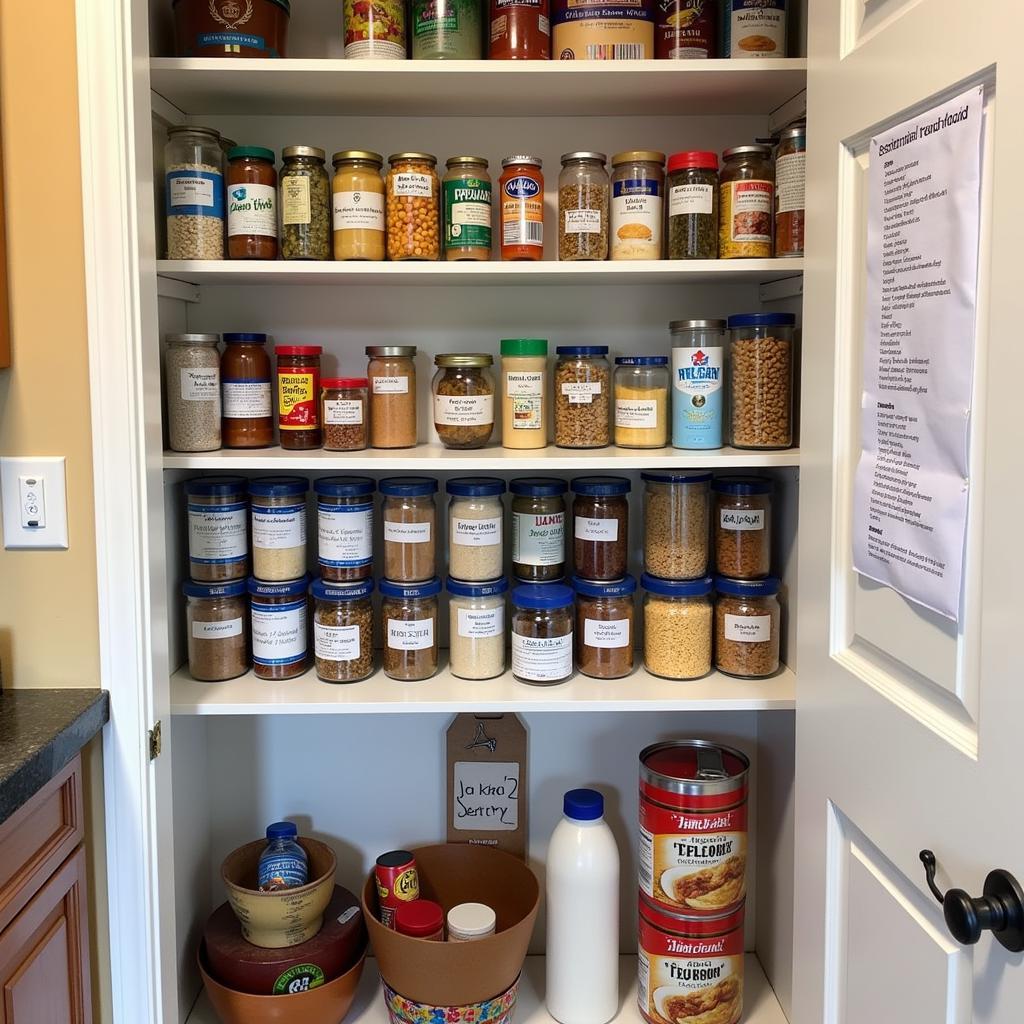Emergency food. It’s not something we like to think about, but it’s a critical aspect of being prepared for any unexpected situation. Whether it’s a natural disaster, a power outage, or a job loss, having a well-stocked pantry of emergency food can provide peace of mind and sustenance during challenging times. This comprehensive guide will delve into the essentials of emergency food, equipping you with the knowledge and resources to build a robust emergency food supply.
Building Your Emergency Food Supply: A Step-by-Step Guide
Creating an emergency food supply doesn’t have to be overwhelming. By following a few simple steps, you can build a stockpile that will last for weeks or even months.
- Assess Your Needs: Consider the number of people in your household and their dietary requirements. Think about how long you want your emergency food supply to last. A good starting point is a two-week supply.
- Choose Non-Perishable Items: Opt for foods that have a long shelf life and don’t require refrigeration. Canned goods, dried fruits, nuts, and grains are excellent choices.
- Diversify Your Options: Include a variety of foods to ensure nutritional balance and prevent palate fatigue. Don’t forget comfort foods like chocolate or hard candies to boost morale during stressful times.
- Organize and Rotate: Store your emergency food in a cool, dry place. Label and date each item. Practice the FIFO (First In, First Out) method to prevent food waste by rotating your stock regularly.
 Organized Emergency Food Pantry
Organized Emergency Food Pantry
Essential Emergency Food Items: What to Stock Up On
Choosing the right emergency food is crucial. Focus on nutrient-dense, shelf-stable options that require minimal preparation.
- Canned Goods: Stock up on canned fruits, vegetables, beans, meats, and fish. These are packed with nutrients and can be eaten cold or heated up.
- Dried Foods: Dried fruits, vegetables, and grains are lightweight and have an incredibly long shelf life. They are perfect for backpacking or long-term storage.
- Nuts and Seeds: These are excellent sources of protein and healthy fats. They can be eaten as a snack or added to meals.
- Protein Bars and Meal Replacement Shakes: These can provide a quick and easy source of calories and nutrients when time is of the essence.
- Comfort Foods: Don’t forget to include some comfort foods like hard candies, chocolate, or instant coffee. These can help boost morale during stressful situations.
Water: The Most Crucial Emergency Supply
While food is essential, water is even more critical for survival. Store at least one gallon of water per person per day for a minimum of two weeks.
- Bottled Water: Purchase commercially bottled water or store tap water in clean, food-grade containers.
- Water Purification: Consider investing in a water filter or purification tablets to ensure access to safe drinking water.
Maintaining Your Emergency Food: Tips for Long-Term Storage
Proper storage is key to maintaining the quality and safety of your emergency food.
- Cool, Dry, and Dark: Store your emergency food in a cool, dry, and dark place, away from direct sunlight and extreme temperatures.
- Check Expiration Dates: Regularly check expiration dates and rotate your stock using the FIFO method.
- Proper Packaging: Ensure all food is stored in airtight containers to protect it from pests and moisture.
Emergency Food for Special Dietary Needs
Consider any special dietary needs or allergies when building your emergency food supply.
- Food Allergies: Ensure all emergency food is free of any allergens that affect members of your household.
- Medical Conditions: Consult with your doctor or a registered dietitian to create an emergency food plan that meets your specific medical needs.
Conclusion: Be Prepared, Stay Safe
Emergency food is an investment in your safety and well-being. By following these guidelines, you can create a comprehensive emergency food supply that will provide peace of mind and sustenance during any unforeseen circumstance. Remember to regularly check and rotate your stock, and stay informed about potential hazards in your area. Having emergency food on hand allows you to focus on what matters most: your family’s safety and security.
FAQ
- How much emergency food do I need? A good starting point is a two-week supply.
- What are the best types of emergency food? Canned goods, dried foods, nuts, and seeds are excellent choices.
- How should I store my emergency food? Store it in a cool, dry, and dark place.
- How often should I rotate my emergency food? Check expiration dates regularly and rotate your stock using the FIFO method.
- What about water for emergencies? Store at least one gallon of water per person per day.
- What if I have special dietary needs? Ensure your emergency food is free of allergens and meets your specific dietary requirements.
- Where can I find more information about emergency preparedness? Contact your local emergency management agency or the Red Cross.
Need help with your emergency food planning? Contact Mina Cones Food at 02437655121, minacones@gmail.com or visit us at 3PGH+8R9, ĐT70A, thôn Trung, Bắc Từ Liêm, Hà Nội, Việt Nam. Our 24/7 customer service team is here to assist you.